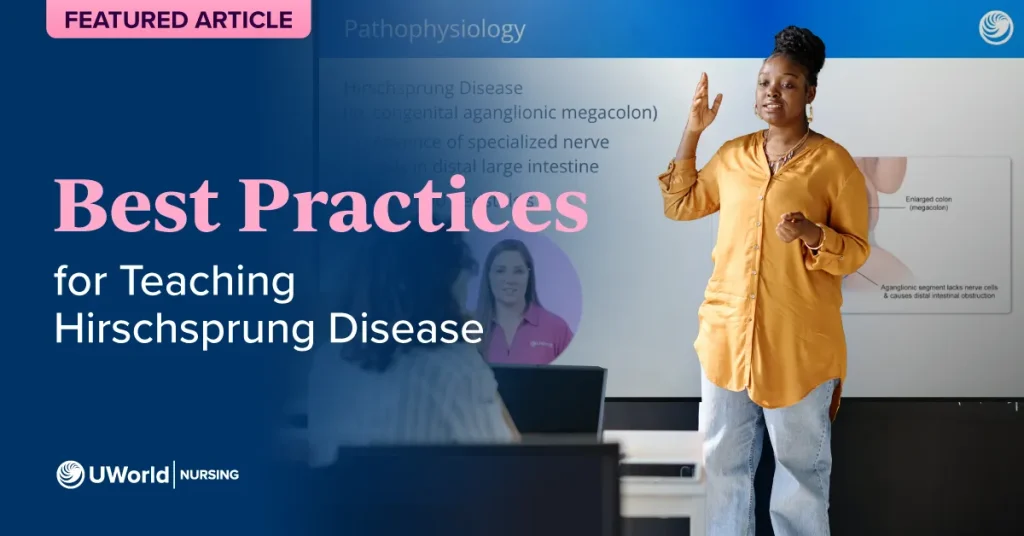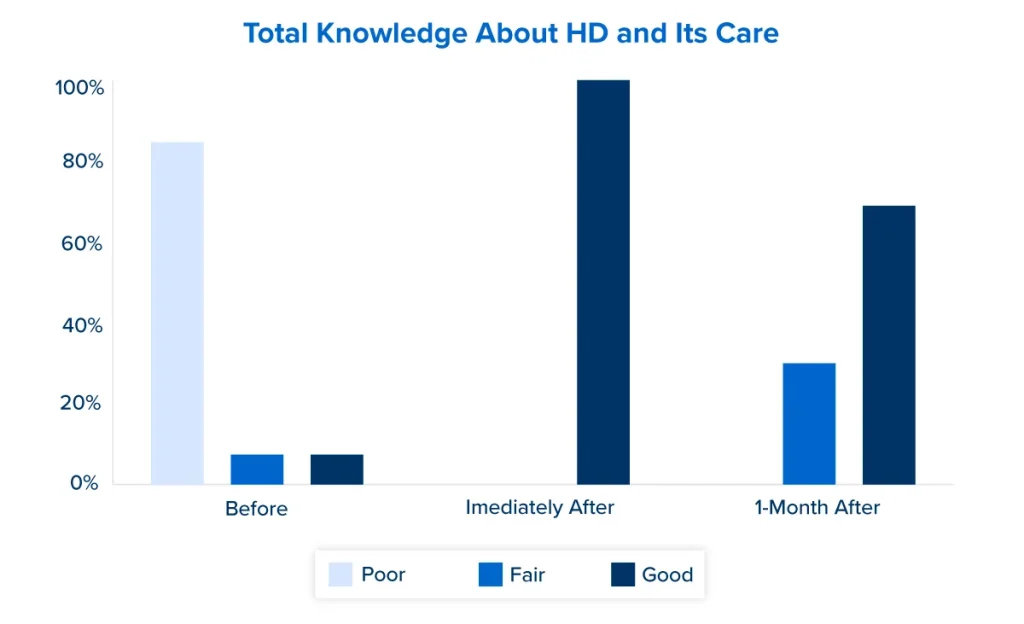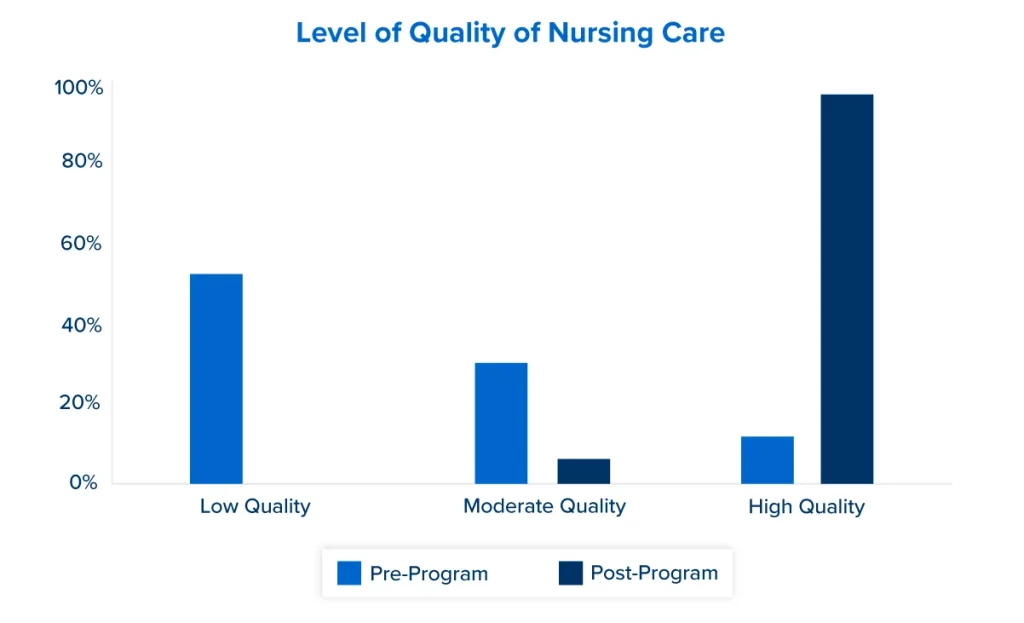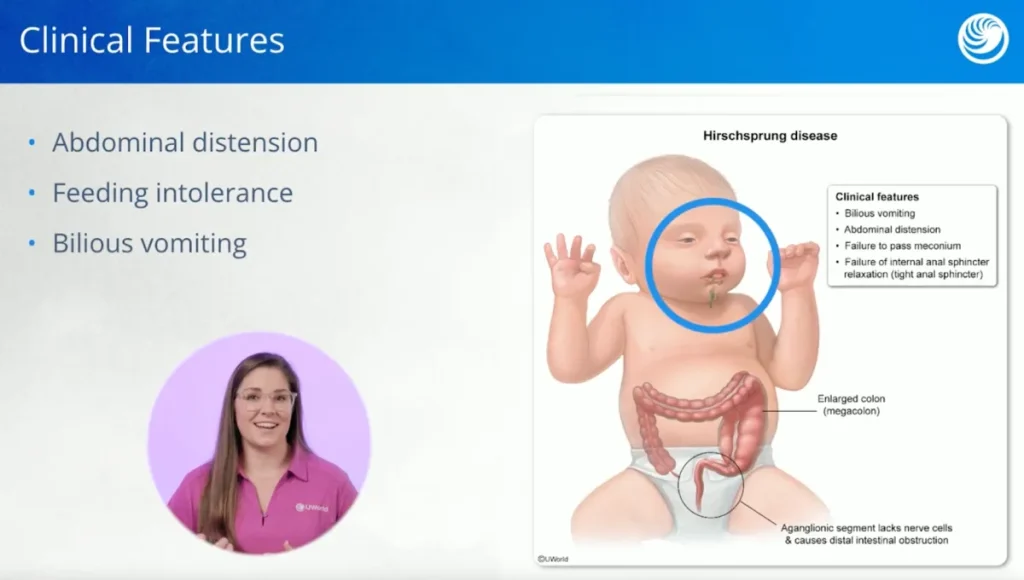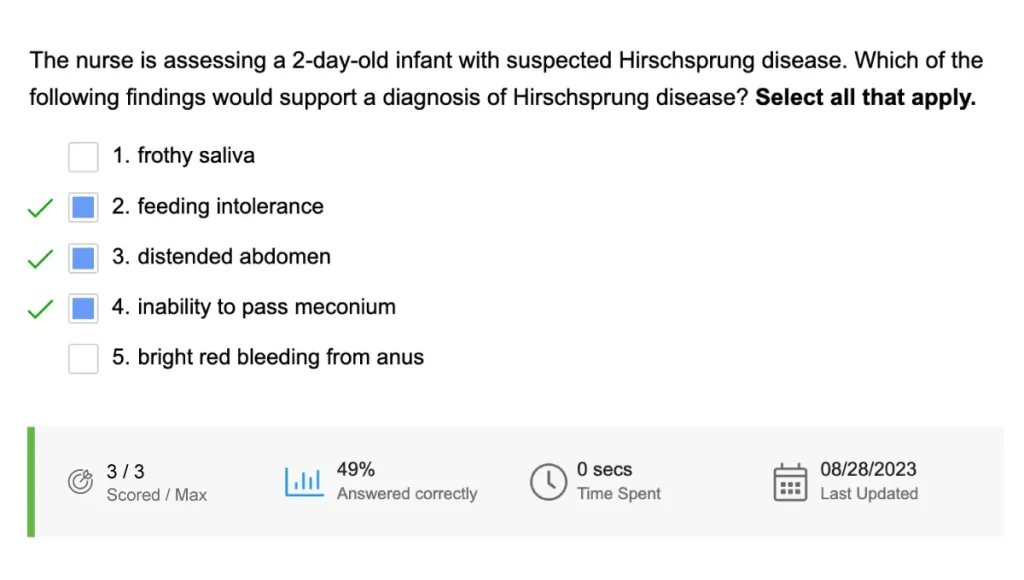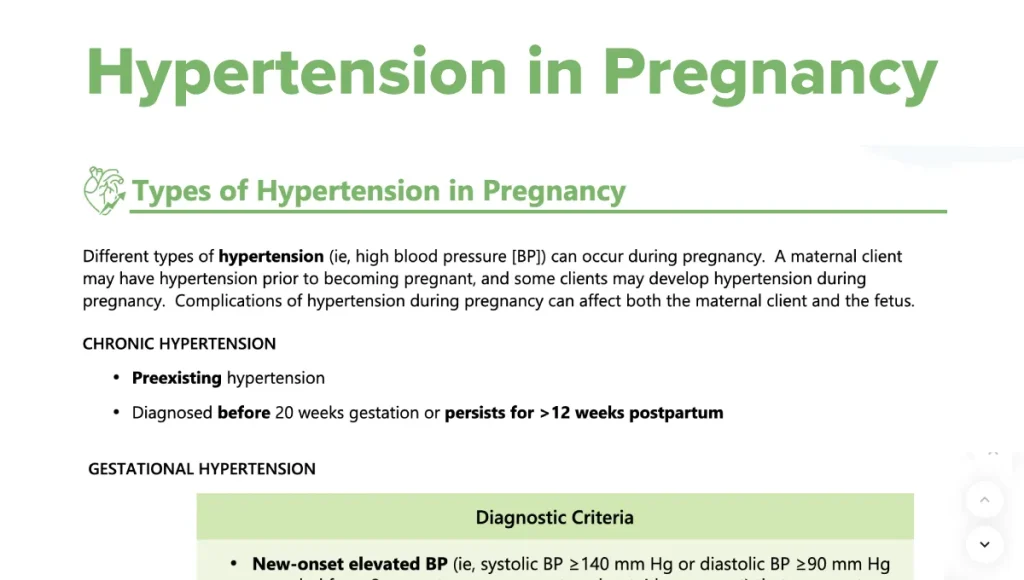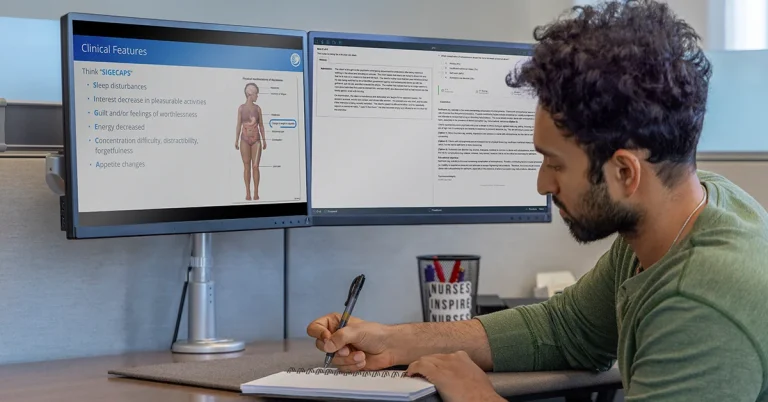Enhance your students’ preparedness for this rare congenital condition by integrating interactive, scenario-based methods and bridging newborn assessments with comprehensive care strategies. This approach addresses textbook gaps, boosts National Council Licensure Examination (NCLEX®) readiness, and promotes interdisciplinary, family-centered education for optimal client outcomes.
Rare, but High-Stakes Disease
Nursing students typically struggle with Hirschsprung disease (HD) because of its rarity (1 in 5,000 births).1 This results in limited clinical exposure and an overreliance on superficial textbook definitions.
Common care deficiencies include:
- Applying symptoms (e.g., bilious vomiting and failure to pass meconium)2,3
- Recognizing the need for an urgent intervention
- Linking HD to newborn assessments and family education
These deficiencies impact your students’ NCLEX scores and put clients at risk. Despite breakthrough surgical advances and treatments, HD mortality remains between 1% and 10%.4
Even Practicing Nurses Struggle
Given the rarity of HD and related intestinal obstruction causes, nursing students often forget important clinical manifestations and treatment procedures. This is true among practicing nurses, as well:
A second study found that implementing a tailored educational program regarding children undergoing intestinal obstruction surgery resulted in a statistically significant positive correlation between nurses’ competency levels, quality of care, and frequency of performed skills in clinical practice.6
While the second study did not follow up with the nurses to measure retention, the first showed that knowledge declined notably during a 1-month period. However, performance did not decline as sharply. In the study, mean performance scores had a baseline of 84.13, rose to 278.63 immediately after intervention, and declined to 252.67 after 1 month (230 to 307 was considered satisfactory).5
The combined results indicate that clinical skills related to HD and other intestinal obstruction complications tend to last longer than knowledge alone. Applying this to students, it follows that:
Effective Teaching Strategies for Hirschsprung Disease
Evidence-based teaching strategies — case-based learning (CBL), simulation training, and leveraging online clinical resources — promote active engagement and sustained learning to address the retention challenges of Hirschsprung disease in undergraduate nursing education. These methods counter the limited clinical exposure to rare congenital conditions like HD, enhancing NCLEX readiness and clinical competence.
Case-Based Learning
Case-based learning involves analyzing HD patient scenarios to build critical thinking and retention through contextual application. A 2020 study on role-play workshops for healthcare students showed significant improvements in exam scores (14/20, ± 3.7 points vs. 9.6/20 ± 5.5 points). Participants felt “very satisfied” (94%) and “more comfortable” about managing the tested frequent condition and rare disease (100%). They found the workshop “not very stressful” and “very formative” (both 71%). This training helped them acquire practical skills, and inspired a more interactive exchange with instructors, leading to better retention.7 This style of CBL is adaptable to nursing, and can help address HD’s complex symptoms. CBL’s interactive discussions reinforce long-term recall, addressing textbook gaps.
Simulation Training
Simulation training uses high-fidelity or virtual scenarios to practice HD-related care, such as newborn assessments and post-surgical interventions. A 2023 scoping review of 23 studies found that “using pediatric simulation as a teaching and learning pedagogy in undergraduate nursing education can increase students’ self-confidence, clinical judgment, knowledge, and skills by providing user-friendly, interactive, and repeatable learning opportunities in a fail-safe environment.”8 Applied to rare diseases like HD, simulation training can help counter performance regression seen in various HD nursing studies.
UWorld’s Online Clinical Resources
Our Maternal-Newborn Health course provides a variety of interactive resources to help your students learn, retain, and apply skills related to rare conditions such as Hirschsprung disease. These overcome rarity limitations and counter the knowledge decline observed in nursing interventions by offering repeatable practice that sustains performance gains. They’re also designed to bridge pediatrics and maternal-newborn content within your curriculum, fostering lasting expertise.
Concise Lecture Videos
Highly focused, engaging UWorld video lessons can be assigned pre- or post-lecture to introduce or reinforce topics. They address common deficiencies, highlight symptoms and interventions, and prioritize accuracy to improve learning outcomes and NCLEX performance.
NCLEX-Style Practice
UWorld maternal-newborn practice questions can be assigned with videos or as standalone, custom assignments. They’re presented as NCLEX items with detailed rationales to increase student familiarity with the exam, promote interactive practice, and align with CBL benefits (e.g., retention).
Auto-Graded Case Studies
NCLEX-style case studies help students develop clinical judgment skills by incorporating all six steps of the NCSBN Clinical Judgment Measurement Model. These case studies present realistic patient scenarios that require students to analyze information, make decisions, and apply their knowledge in a way that mirrors real-world nursing practice.
Assignable UGuides
Complementary UGuides, video lessons, and practice questions can be assigned to students. They include summaries of everything from pathophysiology and manifestations to interventions and client teaching. This kind of high-level, repeat exposure supports sustained competency.
Instructor Resources
To save instructors' time and enhance lectures, we include premade PowerPoints, instructor notes highlighting key points, and in-class polling for immediate feedback and improved participation. Polling and in-class presentation facilitate low-stress interactions, echoing role-play benefits for practical skills and retention.
Performance Tracking
The UWorld gradebook and reporting features track student progress and performance throughout the course. Identify strengths and weaknesses at multiple levels to remediate quickly and ensure alignment with professional standards.
Your Partner for Student Success
Regardless of rarity, our team of practicing nurses and experienced educators covers every tested maternal-newborn topic with the latest information and realistic clinical examples. Our program pairs active learning with comprehensive care considerations to bolster your curriculum and maximize retention. Whether it’s Hirschsprung disease or another complication, we’ll help you confidently apply key concepts across the Maternal-Newborn Health course.
References
- National Institute of Diabetes and Digestive and Kidney Diseases (NIDDK) (Aug. 11, 2025). Definition & Facts for Hirschsprung Disease retrieved from https://www.niddk.nih.gov/health-information/digestive-diseases/hirschsprung-disease/definition-facts
- Cowen, K. J., Wisely, L. M., Dawson, R. M., Ball, J. W., & McGillis Bindler, R. C. (2023). Principles of pediatric nursing: Caring for children (8th ed.). Pearson Education.
- Kyle, T., & Carman, S. (2025). Essentials of pediatric nursing (5th ed.). Wolters Kluwer.
- National Library of Medicine (May 27, 2011). Hirschsprung's disease: what about mortality? retrieved from https://pubmed.ncbi.nlm.nih.gov/21253751/
- IOSR Journal of Nursing and Health Science (IOSR-JNHS) (May 4, 2019). Effect of Nursing Intervention Guidelines on Nurses’ Performance and Clinical Outcomes Related To Problems Accompanying Infants with Hirschsprung Disease retrieved from https://www.iosrjournals.org/iosr-jnhs/papers/vol8-issue3/Series-1/E0803012840.pdf
- International Journal of Novel Research in Healthcare and Nursing (April 2021). Improve Nurses' Competency Level Regarding Care of Children Undergoing Intestinal Obstruction Surgery: An Educational Program retrieved from https://www.noveltyjournals.com/upload/paper/Improve%20Nurses%27%20Competency%20Level.pdf
- BioMed Central Ltd (June 23, 2020). Raising rare disease awareness using red flags, role play simulation and patient educators: results of a novel educational workshop on Raynaud phenomenon and systemic sclerosis retrieved from https://ojrd.biomedcentral.com/articles/10.1186/s13023-020-01439-z.
- Elsevier B.V. (Dec. 9, 2023). Pediatric simulation in undergraduate nursing education: A Scoping Review retrieved from https://www.sciencedirect.com/science/article/pii/S2214139123001221.

